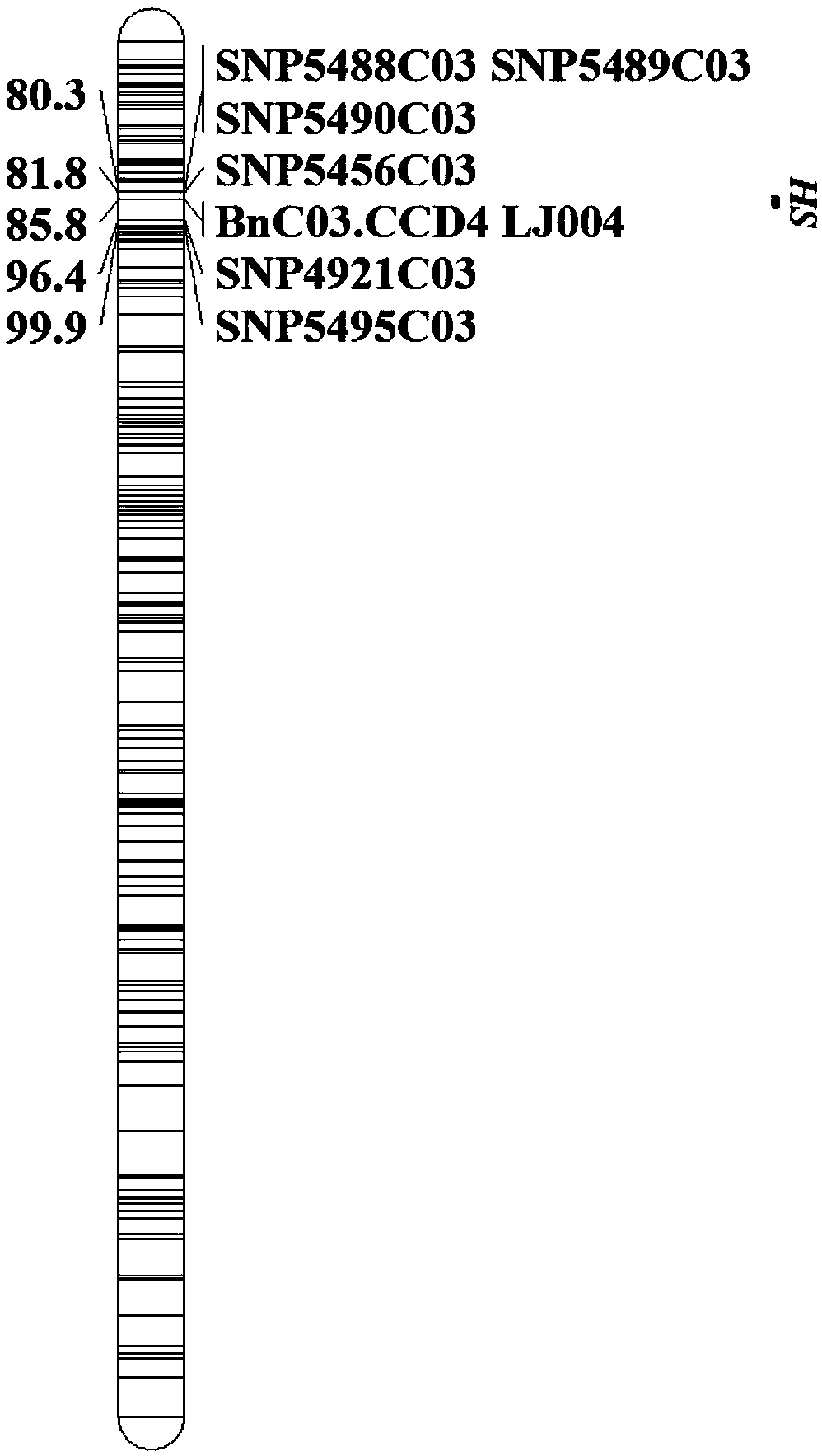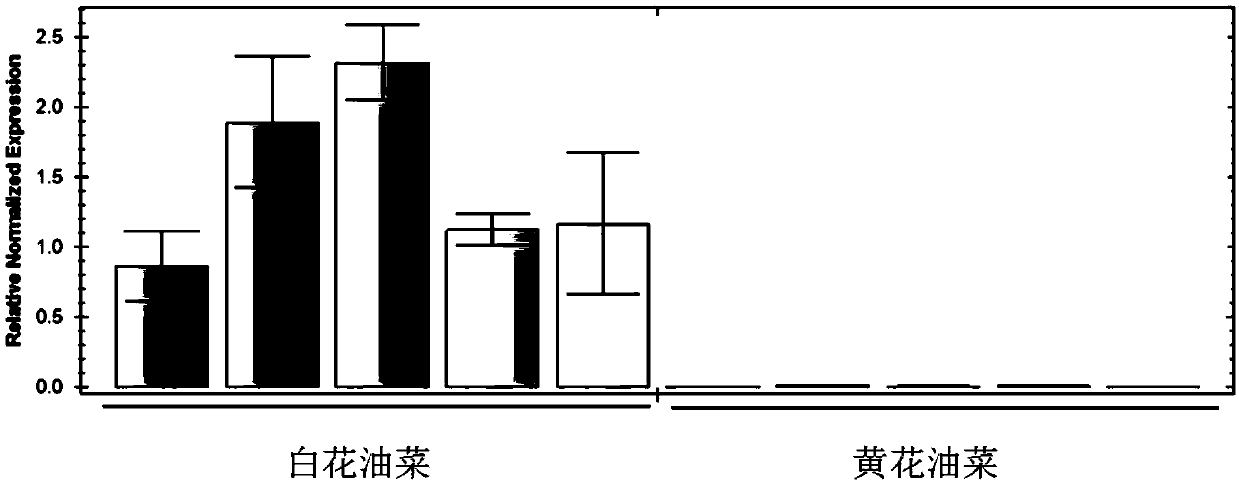Molecular marker closely related to rape flower color traits and application of molecular marker
A molecular marker and flower color technology, applied in the fields of rapeseed breeding and molecular biology, to achieve the effects of enhancing purpose, improving selection efficiency, and simple detection methods
- Summary
- Abstract
- Description
- Claims
- Application Information
AI Technical Summary
Problems solved by technology
Method used
Image
Examples
Embodiment 1
[0015] A molecular marker LJ04 closely related to the white flower trait of rapeseed was obtained by the following method:
[0016] In this example, the DH segregation population developed from one part of white-flowered rapeseed and one part of yellow-flowered rapeseed is taken as an example, and the method for obtaining molecular markers closely related to the white-flowered trait of rapeseed is described in detail, as follows:
[0017] 1. Population construction and phenotypic identification
[0018] The F1 generation was produced by crossing a part of white rapeseed W1 with a part of yellow rapeseed Y1, and then the F1 generation was developed into a DH population through microspore culture technology. During the full flowering period of the plant, the petals of the newly bloomed flowers on the day were scanned, and the B value in RGB was extracted as the phenotype data.
[0019] 2. SNP microarray analysis
[0020] For 91 DH lines, the DNA of young leaves was extracted a...
Embodiment 2
[0034] The difference between this example and Example 1 is that the genotypes of the rapeseed parents in this example are different, and the others are the same as those in Item 4 of Example 1, "Transformation and Detection of Functional Markers".
[0035] In this example, 101 DH lines developed from white-flowered rapeseed W2 and yellow-flowered rapeseed Y2 were used as research materials. Among these plants, 56 showed white flowers and 45 showed yellow flowers. Using the marker LJ04 developed in Example 1 for identification and detection of PCR amplification products: after separation by 13% polyacrylamide gel electrophoresis, only 57 materials with a single band of 177bp appeared, which were white flower parent W2 and 56 materials White flower DH line; only 180bp specific band appeared in 46 materials, which belonged to the yellow flower parent Y2 and 45 yellow flower DH lines; only one material showed both 177bp and 180bp bands, which was F1, and the flower color was white...
Embodiment 3
[0037] The difference between the present embodiment and the embodiment 2 is that the isolated populations of rape in the present embodiment are different, and the others are the same as the embodiment 2.
[0038] In this example, the F1 self-crossing in Example 2 was used to generate the F2 generation, and 255 F2 individuals were tested according to the same detection method in Example 2. The results are as follows: only 177bp single band appeared in 66 materials, all of which appeared as white flowers; only 180bp specific band appeared in 59 materials, all of which appeared as yellow flowers; 120 materials showed both 177bp and 180bp bands , for F1, the flower color is white (such as image 3 ).
[0039] Among the above-mentioned F2 materials, 5 materials (white flowers) with only a single band of 177bp, 5 materials with a specific band of 180bp (yellow flower), and 12 materials (white) with two bands of 177bp and 180bp at the same time were selected. F2: 3 families were p...
PUM
 Login to View More
Login to View More Abstract
Description
Claims
Application Information
 Login to View More
Login to View More - R&D
- Intellectual Property
- Life Sciences
- Materials
- Tech Scout
- Unparalleled Data Quality
- Higher Quality Content
- 60% Fewer Hallucinations
Browse by: Latest US Patents, China's latest patents, Technical Efficacy Thesaurus, Application Domain, Technology Topic, Popular Technical Reports.
© 2025 PatSnap. All rights reserved.Legal|Privacy policy|Modern Slavery Act Transparency Statement|Sitemap|About US| Contact US: help@patsnap.com



